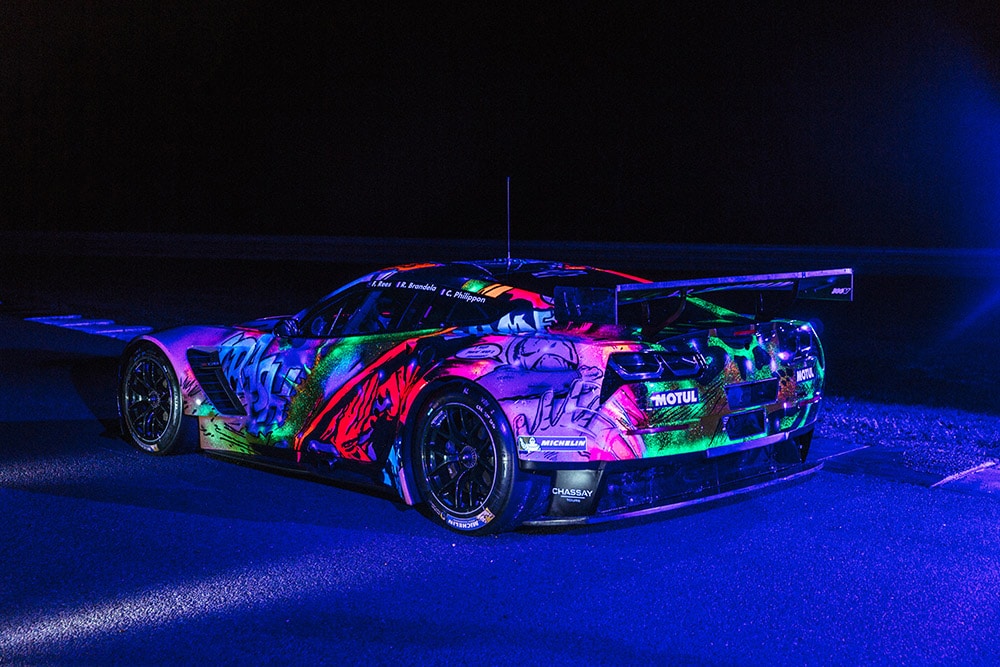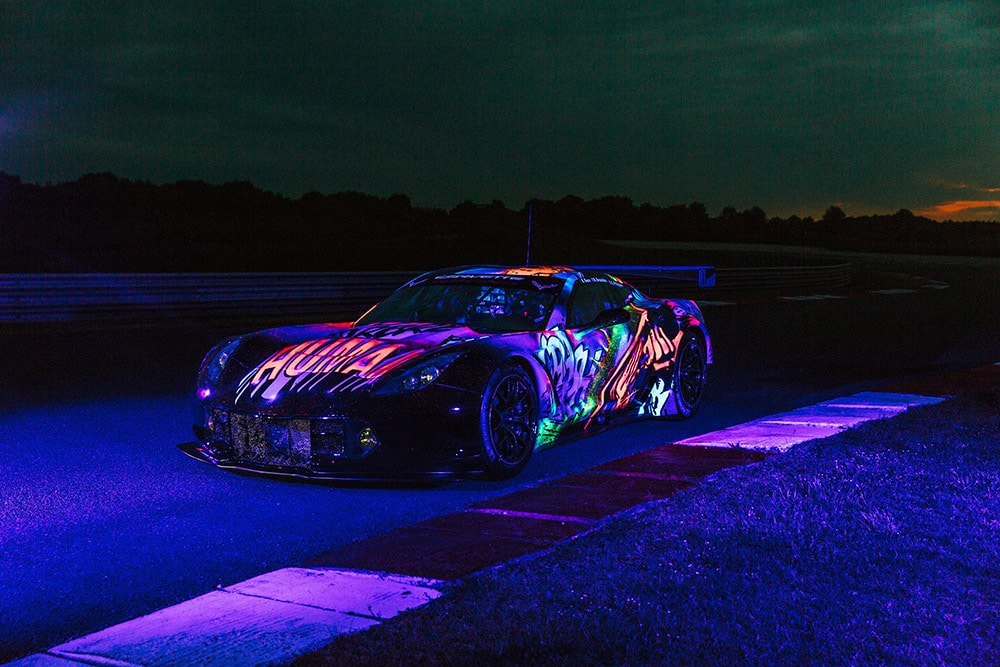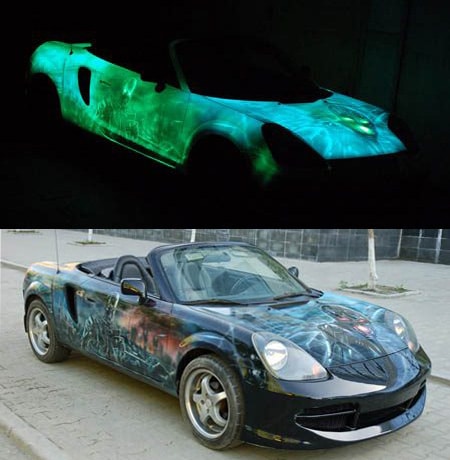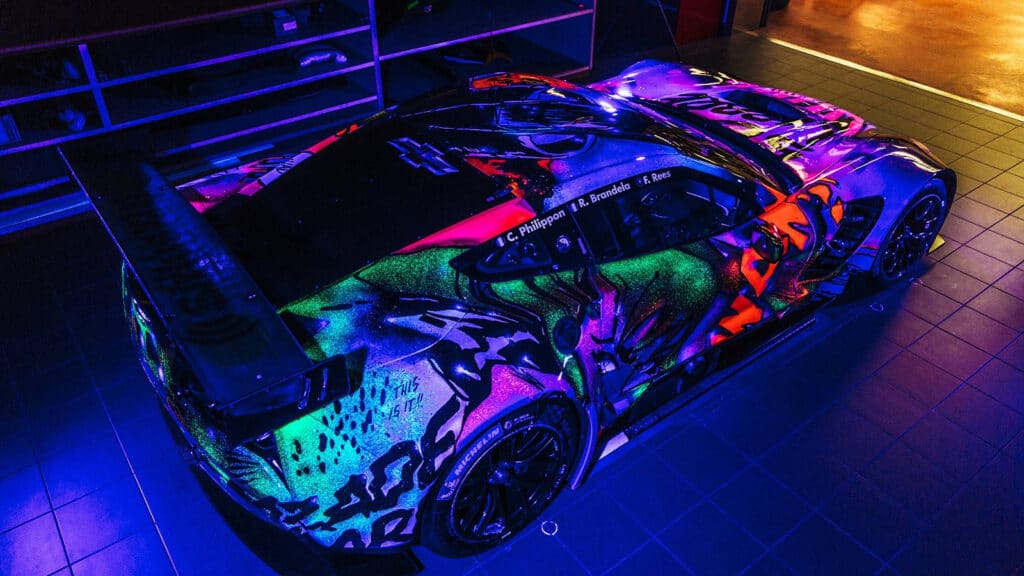The way you style your car is a reflection of yourself, and you want it to look the part.
Factory paint jobs just don’t cut it sometimes, so turning to something unique like custom paint, car wrap, or even glow in the dark paint is the logical next step.
While you can get away with custom paint jobs and vinyl wraps, the laws around glow in the dark paint are a bit ambiguous.
There are many restrictions as to what you can legally do to your car’s appearance, so it’s reasonable to wonder if glowing paint on cars is legal.
In this post, we’ll discuss the legality of this visual upgrade and provide more information on relevant laws relating to automotive paint.
Current Legal Status of Glow in the Dark Paint

There aren’t any explicit laws that prohibit this type of paint on cars in the United States at the time of writing.
In fact, Nissan received a lot of good press for their 2016 Leaf which came with a glow in the dark paint option from the factory.
This can be attributed to the rarity of cars painted in this manner. Typically, laws aren’t written until an issue becomes prevalent enough to warrant legislative action.
Overall, there are no legal restrictions as to how you can or cannot paint your car. But you are likely to be pulled over if you paint your car or install decals in a way that resembles a police vehicle or any other authority vehicle.
Other Relevant Laws

All states have their own specific regulations, but generally, you aren’t permitted to install any electrical lighting fixtures that emit red and or blue lights.
Even though the luminescence that comes from glow in the dark paint isn’t electrical, it’s in your best interest to avoid red or blue colors.
It is also important to remember that even though glowing paint isn’t illegal, you want to be mindful of other any modifications and upgrades that you install along with it.

For example, underglow isn’t legal on public roads in several states. Both underglow lights and glow in the dark paint do similar things, one is illegal in many states and the other has no such documentation of its legal status.
In other words, be sure to double-check your state’s local laws concerning automotive lighting and permitted colors before you add other effects to your vehicle to complement your glow in the dark paint.

One thing you must avoid is changing the color of your headlights and tail lights. While glow in the dark paint might look especially cool with colored headlights and tinted tail lights, the combination will land you in trouble with the cops.
If you want to know more about whether it is legal to have colored headlights check out our article on the subject.
Of course, these laws apply to vehicles driven on public roads; so if you have a track-only car, these rules do not have to be followed.
Vinyl Wrap and Plasti-Dip

Automotive paint in and of itself is not restricted, and the same applies to vinyl wrap and plasti-dip, as well. Both of these applications have glow in the dark options and can be used to get a similar visual effect.
Vinyl wrap is another option as it is generally easier to work with. If you’re wondering how much it costs to wrap your car, know that it is generally cheaper than getting it painted.
That way you don’t have to worry about things like fixing your clear coat and getting the car repainted. It’s definitely a lot cheaper than glow in the dark paint.
Summing Up

In conclusion, there are no laws that specify that you can’t have glow in the dark paint on your car in the United States, at least not at the time of writing.
Just avoid red and/or blue colors, especially emanating from the front of your vehicle, and you should be good to go.

